This reference guide is available to help large customers understand key items on their invoices.
We have also provided answers to some frequently asked questions below.
Page 1

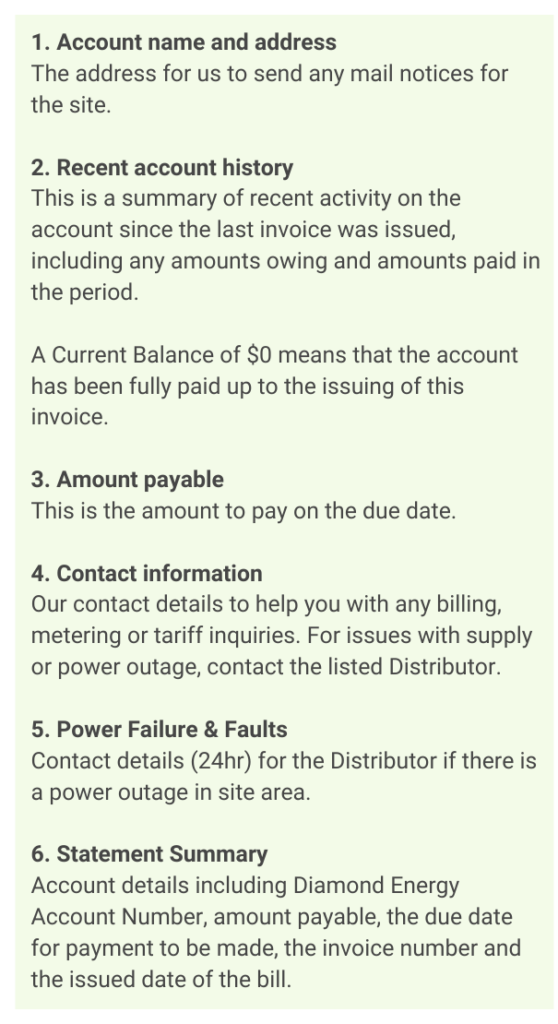
Page 2
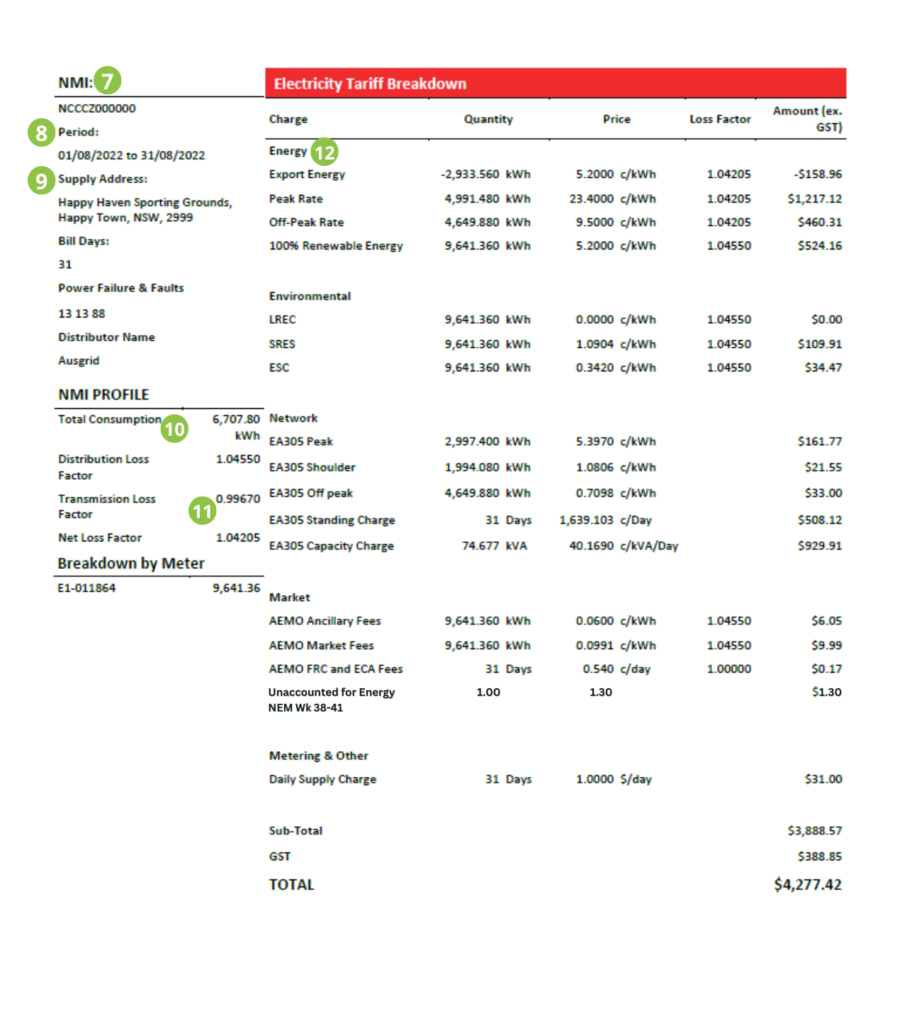
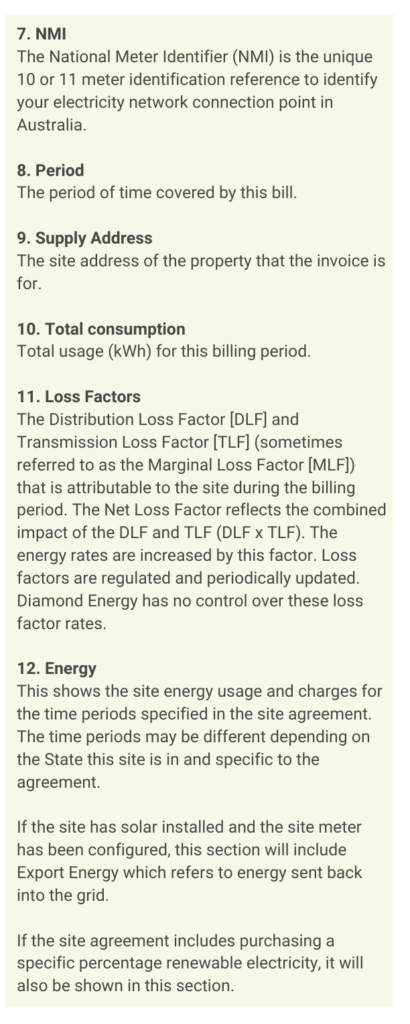
Page 2
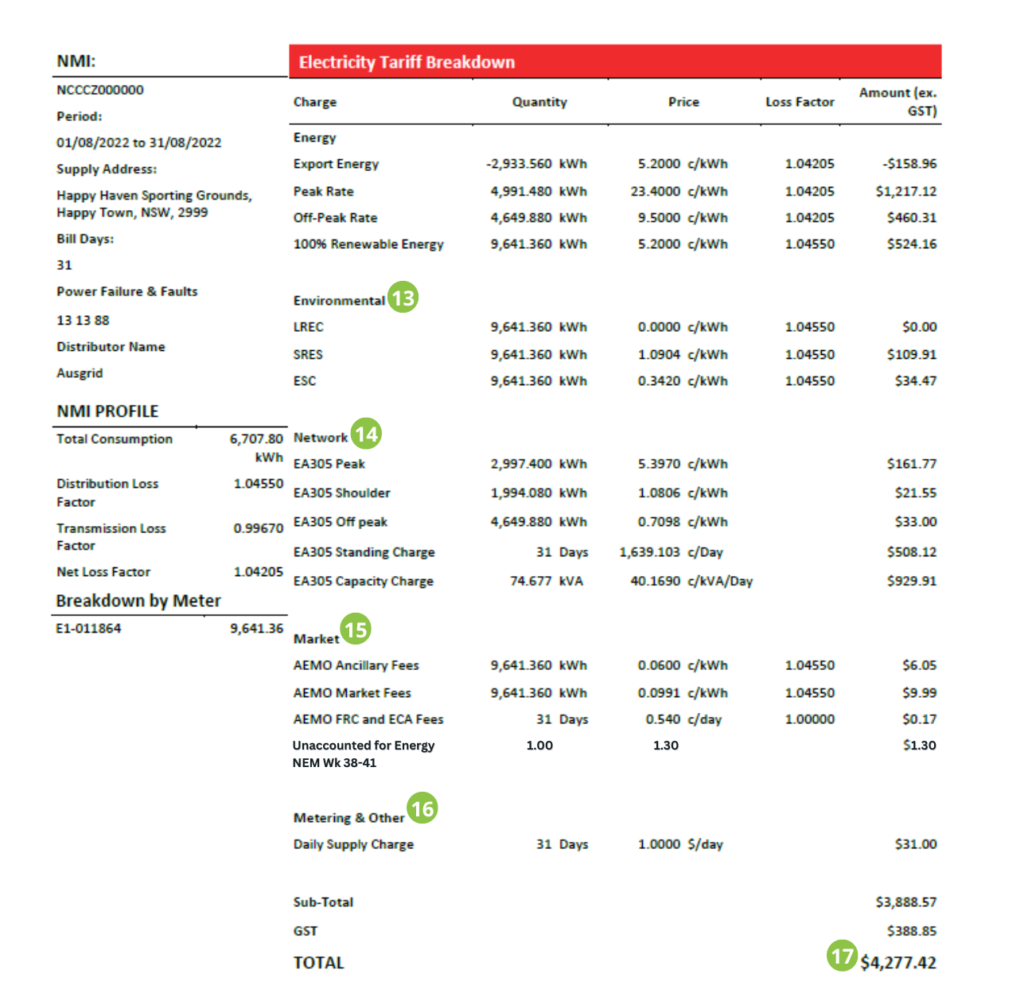
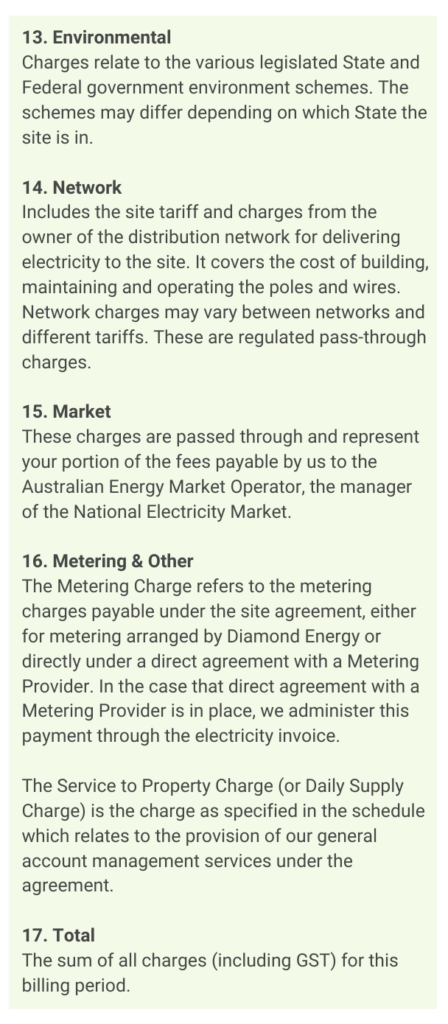
Environmental charges reflect costs incurred by energy retailers to meet their legislative obligations under the Renewable Energy Target and any State based Energy Efficiency Schemes. These costs are subsequently passed through to all energy customers as a direct charge, either as a fixed percentage or based on the percentages published on the Clean Energy Regulator’s (CER) website. Your Electricity Supply Agreement will provide more detail on the percentages and rates that apply.
The Renewable Energy Target, or RET, is a Commonwealth Government scheme that aims to reduce the level of greenhouse gas emitted in the electricity sector, and encourages additional generation of electricity from sustainable and renewable sources such as rooftop solar. Legislated by the Commonwealth Government and administered by the Clean Energy Regulator, the RET uses incentives and environmental schemes to ensure renewable energy makes up at least 20 per cent of electricity generated by 2020.
The RET operates at two levels:
The Large-scale Renewable Energy Target looks to reduce emissions in the electricity sector by boosting investment in renewable energy.
Financial incentives in the form of Large-scale Generation Certificates (LGC’s) are created and traded. LGC’s can be created by generating electricity from accredited renewable energy sources, such as solar and wind, with one LGC equivalent to 1 MWh. Each year, liable entities, such as power stations, must provide LGC’s to offset the emissions generated that year.
On your invoice, the cost to achieve the LRET is shown as the LREC or Large-scale Renewable Energy Certificate charge.
The Small-scale Renewable Target provides incentives for individuals, small businesses and communities to invest in renewable energy systems. Certificates are created based on the renewable energy generated and are then traded to offset emissions.
There’s more information on the small-scale Renewable Energy Scheme on the CER website.
On your invoice, the cost to achieve the SRET is shown as the SREC or Small-scale Renewable Energy Certificate charge.
Energy Savings Certificates
Program: Energy Saving Scheme (ESS)
Jurisdiction: NSW
Scheme Administrator, and Scheme Regulator: Independent Pricing and Regulatory Tribunal (IPART)
Applications:
Electricity
Lighting Upgrades, HVAC Chiller Upgrades, BMS Upgrades, Chiller Software, Compressed Air upgrades, Motors and Drives (VSDs etc.), EC Fans, Water Pumping, Industrial Refrigeration
Victorian Energy Efficiency Certificates (VEECs)
Program: Victorian Energy Upgrades (VEU)
Jurisdiction: Victoria
Scheme Administrator, and Scheme Regulator: Essential Services Committee (ESC)
Applications:
Electricity
Lighting Upgrades, HVAC Chiller Upgrades, BMS Upgrades, Chiller Software, Compressed Air upgrades, Motors and Drives (VSDs etc.), EC Fans, Water Pumping, Industrial Refrigeration
Retailer Energy Productivity Scheme (REPS)
Program: Retail Energy Productivity Scheme (REPS)
Jurisdiction: South Australia
Scheme Administrator, and Scheme Regulator: Essential Services Commission of South Australia (ESCOSA)
Applications: LED Lighting Upgrades, Refrigeration Display Cases (RDC)
From the 1st May 2022, a Change of Law directly affects supply of electricity to large customer sites and will appear as a new item on invoices in the Market section as “Unaccounted for Energy”.
Unaccounted for Energy is electricity that has been consumed in a region of the network, but cannot be traced to a particular meter in that region. Examples include electricity for unmetered lighting, traffic signals, streets or parks that was higher or lower than estimated.
Historically, these charges were referred to as “Settlement By Difference” and were only charged to the Local Area Retailer (primarily Origin Energy, AGL and EnergyAustralia).
The Change of Law from 1st May 2022 shares these costs across all loads in a region of the network and has been introduced through the Global Settlements and Market Reconciliation rule. Broadly, the Unaccounted for Energy charges are calculated based on the load (MWh), State Spot price ($/MWh) and an allocation by AEMO to the local network.
As per our Large Customer Terms and Conditions, the Change of Law through the commencement of Global Settlements and Market Reconciliation results in a Variation to Charges (Clause 7) which is an additional market pass through charge for large customers.
You can read more about the AEMC rule change Global Settlements and Market Reconciliation.
The guidance is that impact of Unaccounted for Energy charges on large customer invoices is likely to be minor from invoice to invoice. Unaccounted for Energy charges may even vary from positive on one invoice to negative on the next.